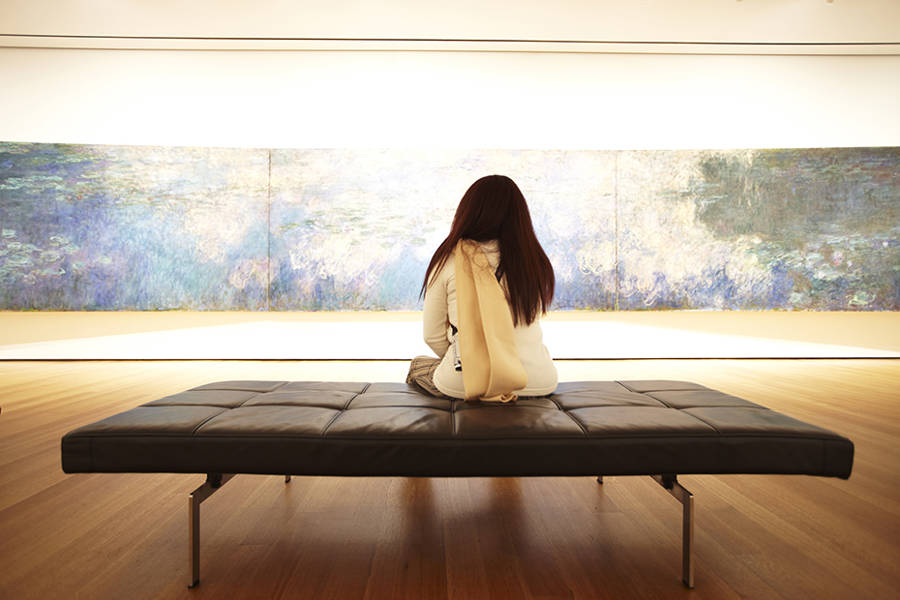
Accessing New York City’s Museums
Supporting these institutions in welcoming visitors of all abilities is a long-term focus of the Stavros Niarchos Foundation’s (SNF) grantmaking, particularly in New York City.
At New York’s Museum of Modern Art (MoMA), SNF supports Access and Community Programs. These include Art inSight for visitors who are blind or have low vision, Interpreting MoMA for visitors who are deaf, Create Ability for visitors who have intellectual and developmental disabilities, and Meet Me at MoMA for visitors with dementia and their caregivers, among others. In 2018, MoMA’s Access Programs were recognized with a quadrennial best practice award from the Zero Project.
Further downtown, at the Whitney Museum of American Art, SNF supports education and access programs including Verbal Description and Touch Tours, American Sign Language tours, and programming for kids on the Autism spectrum.
At the Queens Museum, the ArtAccess initiative encompasses a range of programming created and delivered by licensed art therapists. These include tours and workshops for the New York City school district that serves students facing significant challenges, hands-on open studio workshops for adults with disabilities and people with mental illness, and programs for families affected by autism.
In Brooklyn, one major cultural institution was able to reopen its outdoor spaces this week—with adaptations for pandemic safety, of course. A recent grant from SNF supports the Brooklyn Botanic Garden (BBG) in its Expanding BBG’s Welcome initiative to offer enhanced resources and programming for visitors who are deaf, are blind or partially sighted, have intellectual disabilities, or face mobility challenges.
SNF support for access programs across the city is about serving people who are looking to enjoy these particular New York institutions, but it’s also about exploring models for how cultural organizations around the world can enable people of all backgrounds and abilities to experience what they have to offer in its full depth and breadth. As institutions grapple with what their offerings will look like in the pandemic and post-pandemic era, this leadership is more critical than ever.
While closed to the public, MoMA, for instance, has been able to continue offering Community and Access Programs, including Art InSight and Create Ability, virtually.